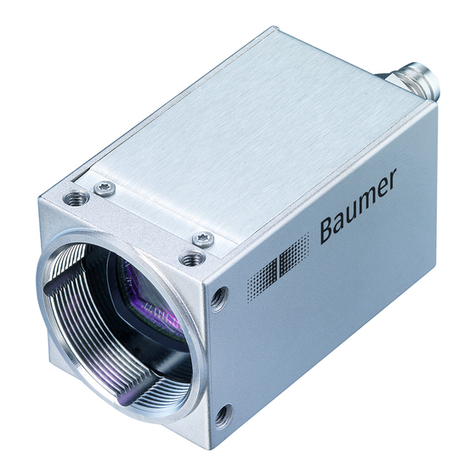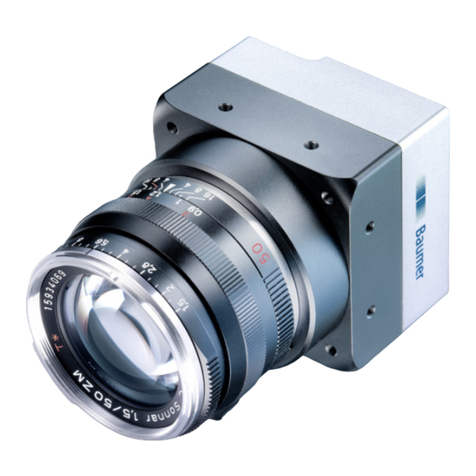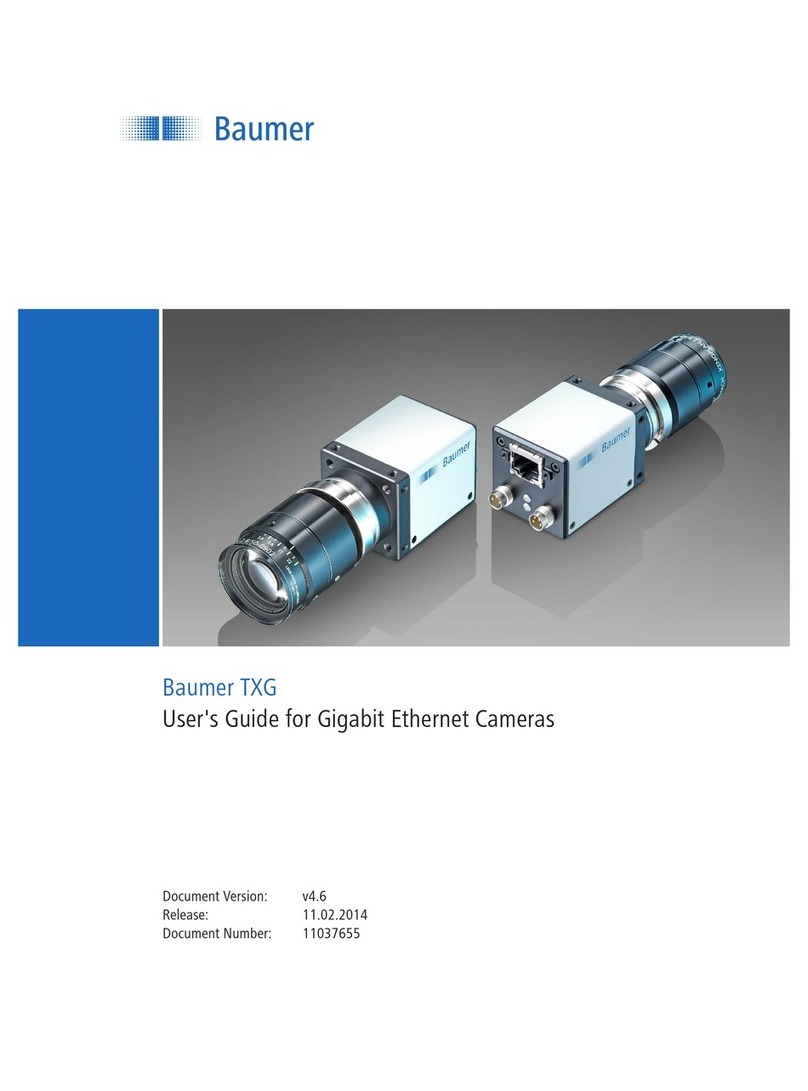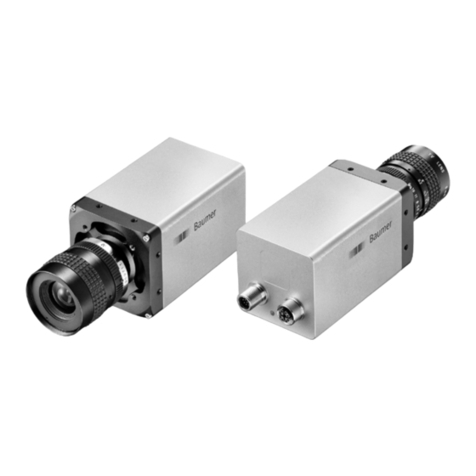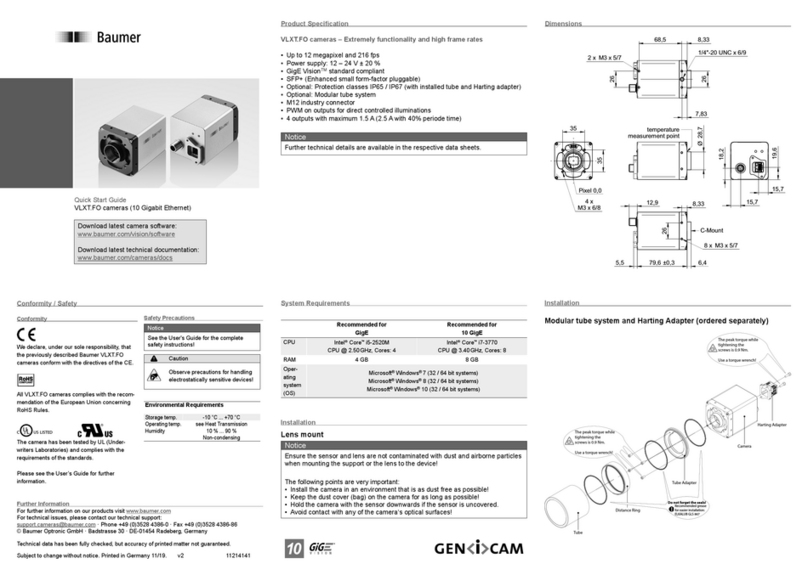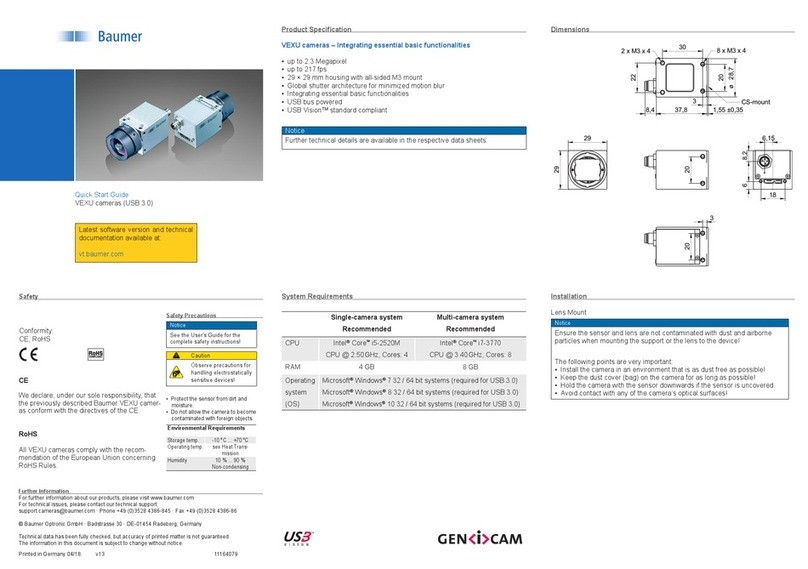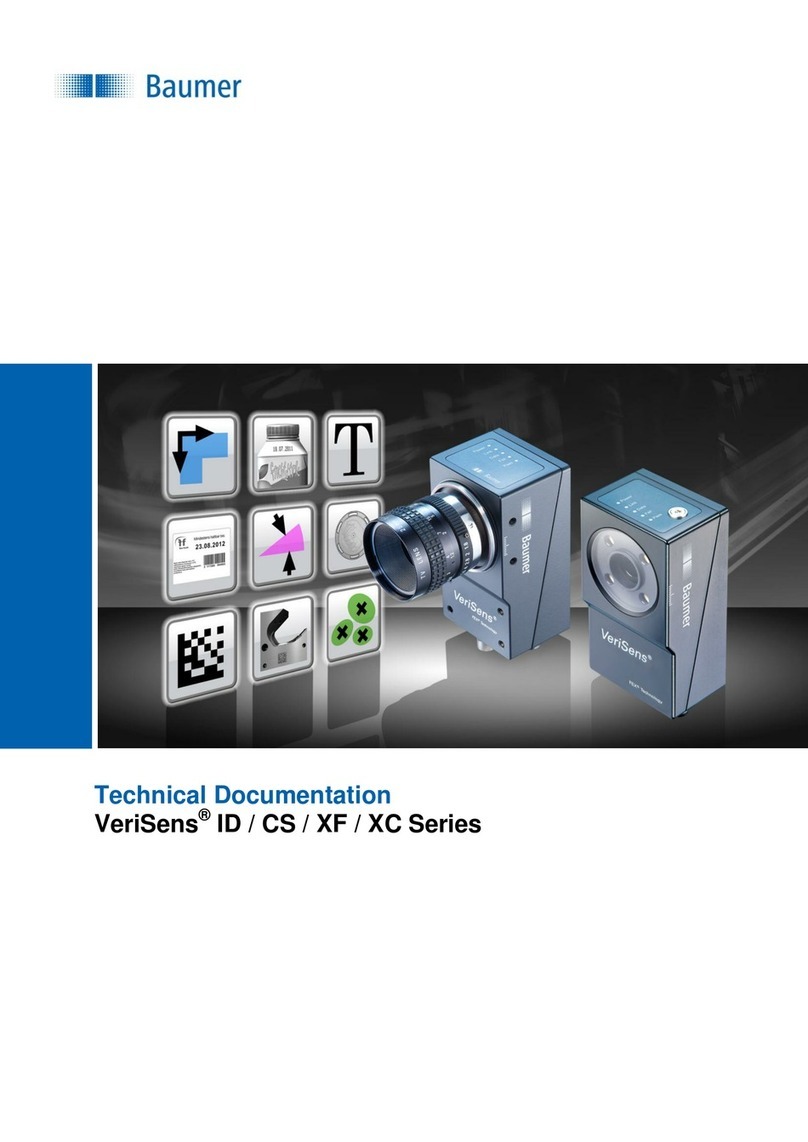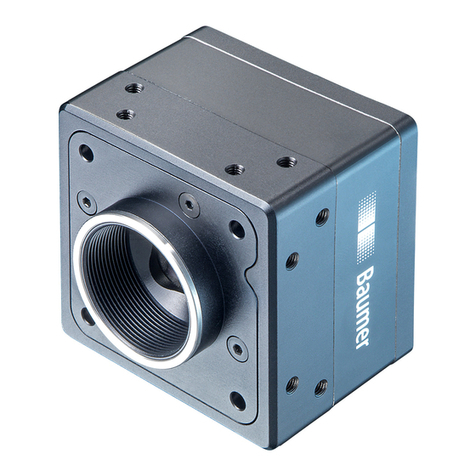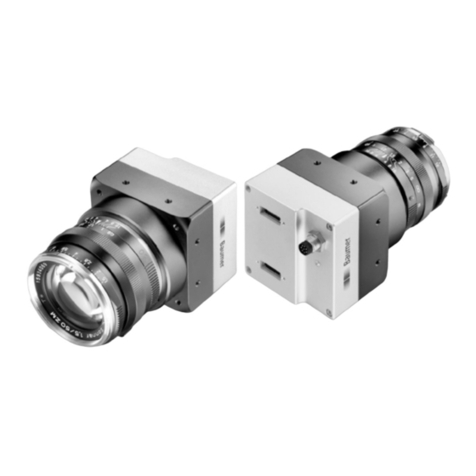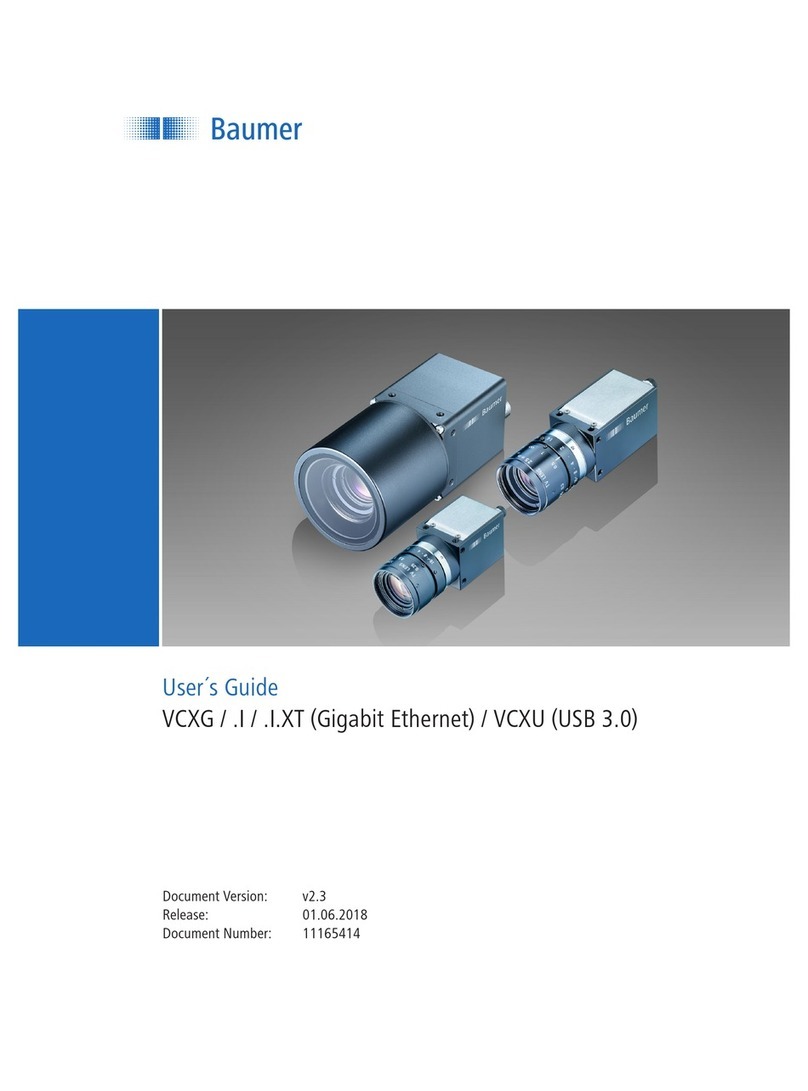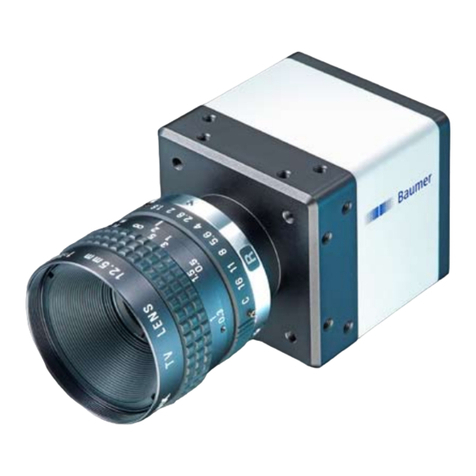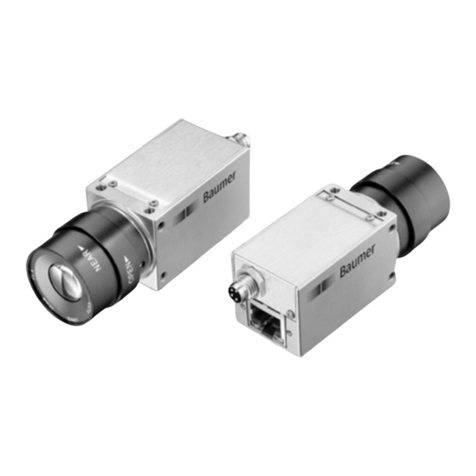
Table of Contents
1. General Information ................................................................................................. 4
2. General safety instructions ..................................................................................... 5
3. Intended Use............................................................................................................. 5
4. General Description ................................................................................................. 5
5. Camera Models......................................................................................................... 6
5.1 HXC – Cameras with C-Mount................................................................................ 6
5.2 HXC-F – Cameras with F-Mount............................................................................. 7
6. ProductSpecications ............................................................................................ 8
6.1 Identication of Firmware version ........................................................................... 8
6.2 Sensor Specications ............................................................................................. 8
8
.......................................... 8
.................. 8
6.2.1 Identication of Sensor Version........................................................................
6.2.2 Quantum Efciency for HXC Cameras ..... 6.2.3
Shutter ............................................................................................
6.2.4 Digitization Taps ............................................................................................... 9
6.3 Timings.................................................................................................................. 10
6.3.1 Free Running Mode........................................................................................ 10
6.3.2 Trigger Mode ...................................................................................................11
6.4 Field of View Position............................................................................................ 15
6.5 Process- and Data Interface ................................................................................. 16
6.5.1 Pin-Assignment CameraLink® Interface ......................................................... 16
6.5.2 Pin-Assignment Power Supply and Digital IOs .............................................. 17
6.5.3 LED Signaling................................................................................................. 17
6.6 Environmental Requirements................................................................................ 18
6.6.1 Temperature and Humidity Range.................................................................. 18
6.6.2 Heat Transmission.......................................................................................... 18
6.6.3 Mechanical Tests ............................................................................................ 19
20
....................................................................................................... 20
......................................................................................... 21
7. Software ..................................................................................................................
7.1 GAPI.
8. Camera Functionalities. 8.1 Image Acquisition..............................................
.................................................... 21
8.1.1 Image Format ................................................................................................. 21
8.1.2 Pixel Format ................................................................................................... 22
8.1.3 Exposure Time................................................................................................ 24
8.1.4 PRNU / DSNU Correction (FPN - Fixed Pattern Noise) ................................. 24
8.1.5 High Dynamic Range (HDR) .......................................................................... 25
8.1.6 Look-Up-Table ................................................................................................ 25
8.1.7 Gamma Correction ......................................................................................... 26
8.1.8 Region of Interest (ROI) and Multi-ROI .......................................................... 26
8.1.9 Binning / Subsampling.................................................................................... 28
8.1.10 Brightness Correction (Binning Correction).................................................. 29
8.2 Color Adjustment – White Balance ....................................................................... 29
8.2.1 User-specic Color Adjustment ...................................................................... 29
8.2.2 One Push White Balance ............................................................................... 29
